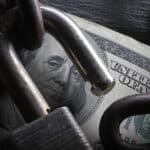Reading Time: 2 minutesWith cybersecurity breaches at an all-time high, and in observance of Cybersecurity Awareness Month, KCoe’s IT consultants share this reminder of what makes safe passwords both strong and effective.
When choosing a password, try to incorporate as many of the below tips (courtesy of HoganTaylor) as you can for safety.
- Consider a Passphrase
- Don’t Repeat Passwords
- Utilize a Password Manager
- Change Passwords Regularly
- Enable Multi-Factor Authentication








